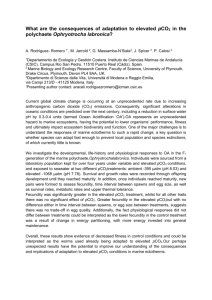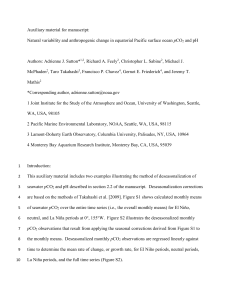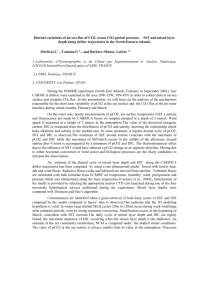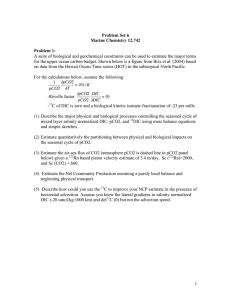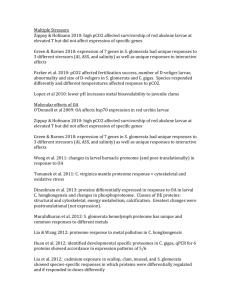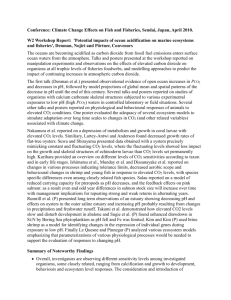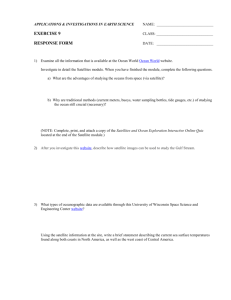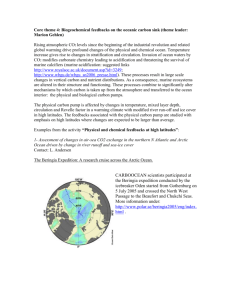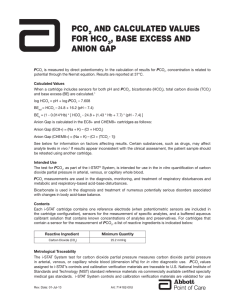A mechanistic semi-analytical method for remotely sensing sea
advertisement
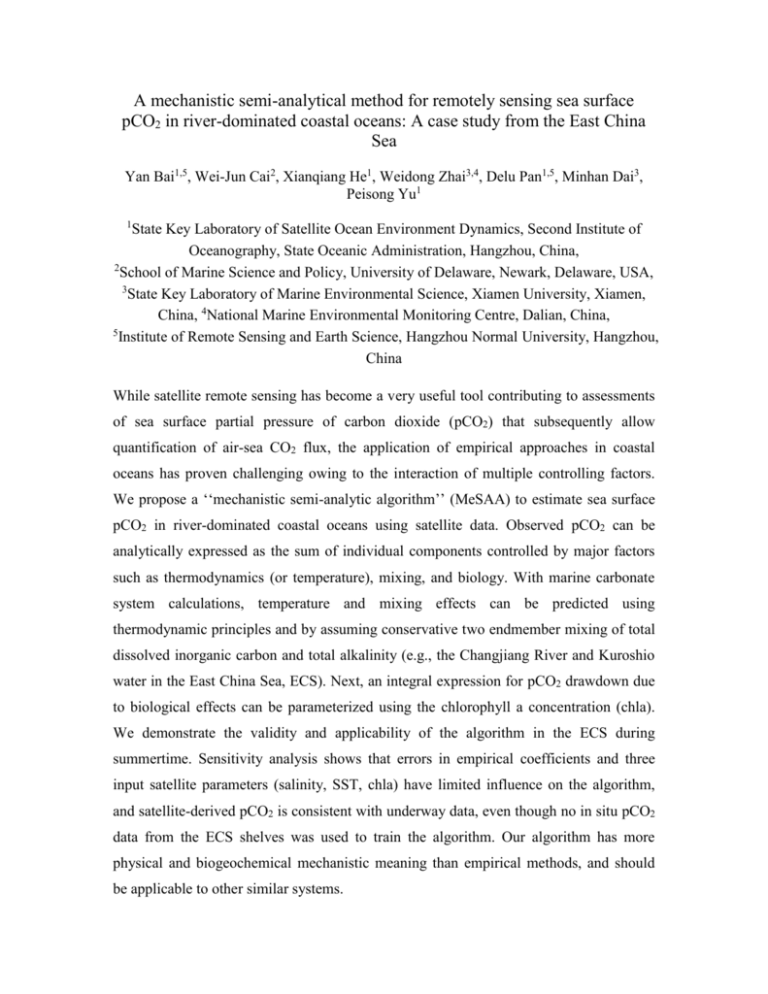
A mechanistic semi-analytical method for remotely sensing sea surface pCO2 in river-dominated coastal oceans: A case study from the East China Sea Yan Bai1,5, Wei-Jun Cai2, Xianqiang He1, Weidong Zhai3,4, Delu Pan1,5, Minhan Dai3, Peisong Yu1 1 State Key Laboratory of Satellite Ocean Environment Dynamics, Second Institute of Oceanography, State Oceanic Administration, Hangzhou, China, 2 School of Marine Science and Policy, University of Delaware, Newark, Delaware, USA, 3 State Key Laboratory of Marine Environmental Science, Xiamen University, Xiamen, China, 4National Marine Environmental Monitoring Centre, Dalian, China, 5 Institute of Remote Sensing and Earth Science, Hangzhou Normal University, Hangzhou, China While satellite remote sensing has become a very useful tool contributing to assessments of sea surface partial pressure of carbon dioxide (pCO2) that subsequently allow quantification of air-sea CO2 flux, the application of empirical approaches in coastal oceans has proven challenging owing to the interaction of multiple controlling factors. We propose a ‘‘mechanistic semi-analytic algorithm’’ (MeSAA) to estimate sea surface pCO2 in river-dominated coastal oceans using satellite data. Observed pCO2 can be analytically expressed as the sum of individual components controlled by major factors such as thermodynamics (or temperature), mixing, and biology. With marine carbonate system calculations, temperature and mixing effects can be predicted using thermodynamic principles and by assuming conservative two endmember mixing of total dissolved inorganic carbon and total alkalinity (e.g., the Changjiang River and Kuroshio water in the East China Sea, ECS). Next, an integral expression for pCO2 drawdown due to biological effects can be parameterized using the chlorophyll a concentration (chla). We demonstrate the validity and applicability of the algorithm in the ECS during summertime. Sensitivity analysis shows that errors in empirical coefficients and three input satellite parameters (salinity, SST, chla) have limited influence on the algorithm, and satellite-derived pCO2 is consistent with underway data, even though no in situ pCO2 data from the ECS shelves was used to train the algorithm. Our algorithm has more physical and biogeochemical mechanistic meaning than empirical methods, and should be applicable to other similar systems.
